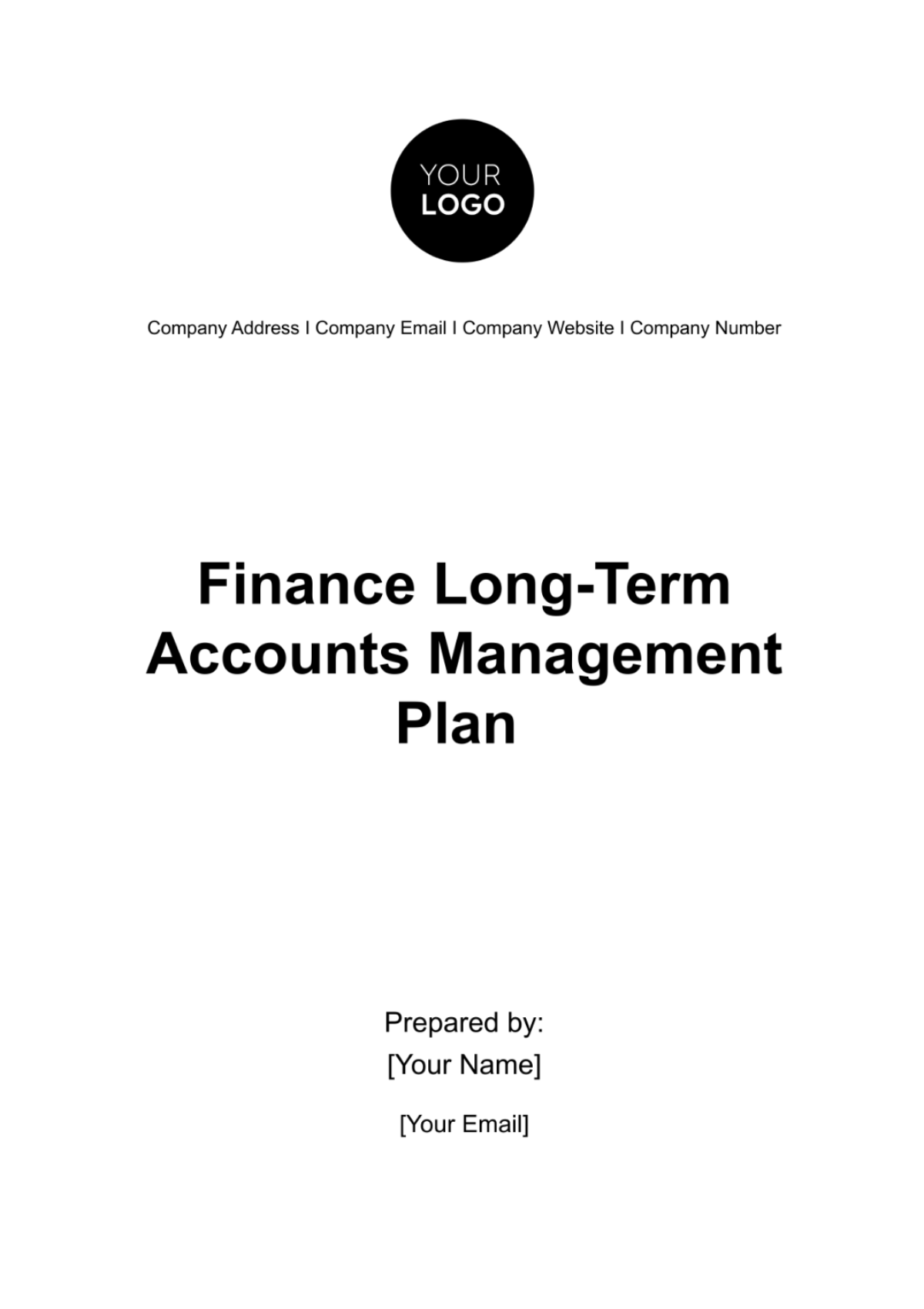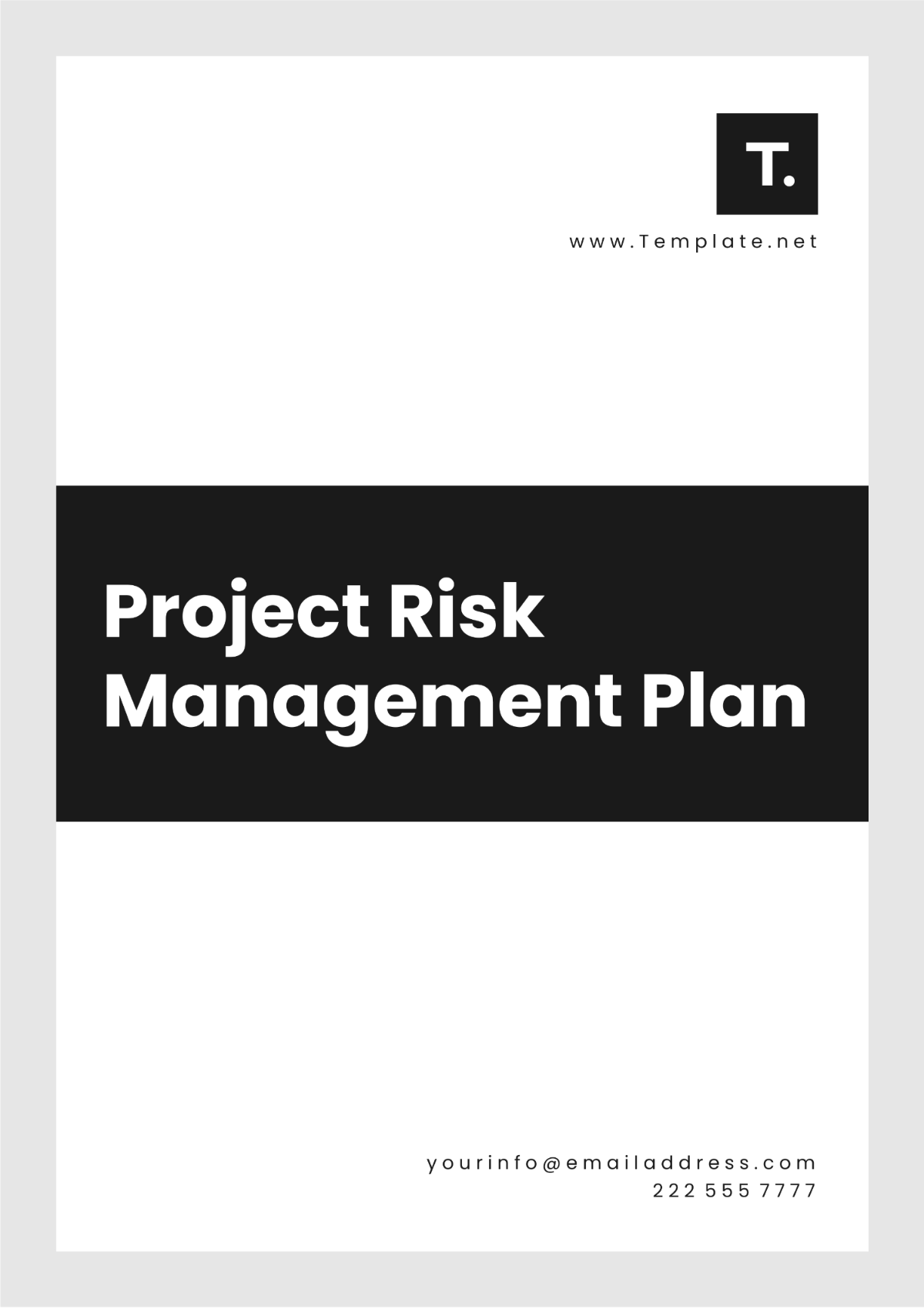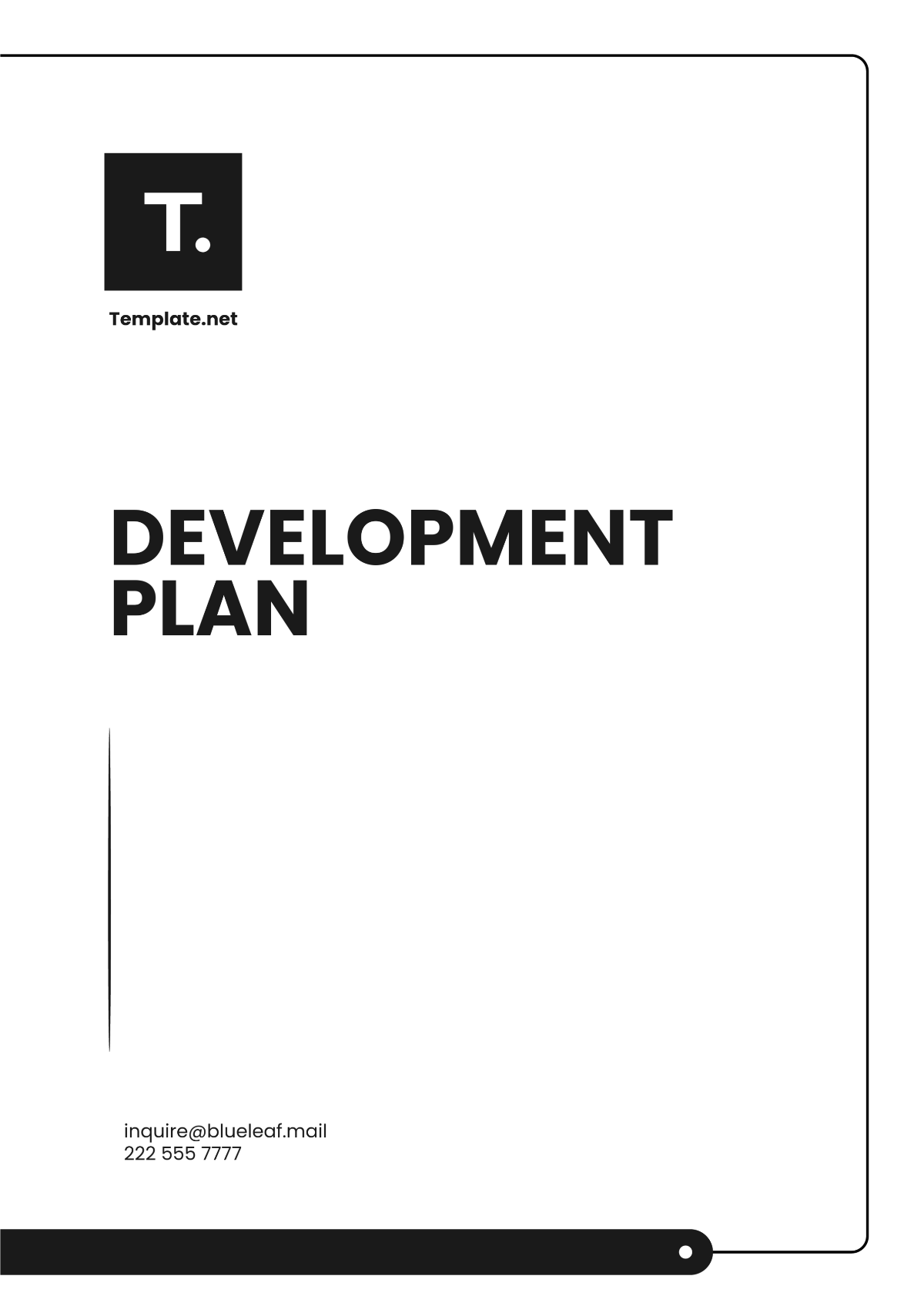Free Finance Long-Term Accounts Management Plan

- 100% Customizable, free editor
- Access 1 Million+ Templates, photo’s & graphics
- Download or share as a template
- Click and replace photos, graphics, text, backgrounds
- Resize, crop, AI write & more
- Access advanced editor
Strategically steer your financial future with Template.net's Finance Long-Term Accounts Management Plan Template. This professional, editable, and customizable tool is designed to guide the sustained growth and management of financial accounts. Perfect for creating detailed work using our Ai Editor Tool for forward-looking plans that ensure financial stability and prosperity over the long term, aligning with your overarching financial goals.
You may also like
- Finance Plan
- Construction Plan
- Sales Plan
- Development Plan
- Career Plan
- Budget Plan
- HR Plan
- Education Plan
- Transition Plan
- Work Plan
- Training Plan
- Communication Plan
- Operation Plan
- Health And Safety Plan
- Strategy Plan
- Professional Development Plan
- Advertising Plan
- Risk Management Plan
- Restaurant Plan
- School Plan
- Nursing Home Patient Care Plan
- Nursing Care Plan
- Plan Event
- Startup Plan
- Social Media Plan
- Staffing Plan
- Annual Plan
- Content Plan
- Payment Plan
- Implementation Plan
- Hotel Plan
- Workout Plan
- Accounting Plan
- Campaign Plan
- Essay Plan
- 30 60 90 Day Plan
- Research Plan
- Recruitment Plan
- 90 Day Plan
- Quarterly Plan
- Emergency Plan
- 5 Year Plan
- Gym Plan
- Personal Plan
- IT and Software Plan
- Treatment Plan
- Real Estate Plan
- Law Firm Plan
- Healthcare Plan
- Improvement Plan
- Media Plan
- 5 Year Business Plan
- Learning Plan
- Marketing Campaign Plan
- Travel Agency Plan
- Cleaning Services Plan
- Interior Design Plan
- Performance Plan
- PR Plan
- Birth Plan
- Life Plan
- SEO Plan
- Disaster Recovery Plan
- Continuity Plan
- Launch Plan
- Legal Plan
- Behavior Plan
- Performance Improvement Plan
- Salon Plan
- Security Plan
- Security Management Plan
- Employee Development Plan
- Quality Plan
- Service Improvement Plan
- Growth Plan
- Incident Response Plan
- Basketball Plan
- Emergency Action Plan
- Product Launch Plan
- Spa Plan
- Employee Training Plan
- Data Analysis Plan
- Employee Action Plan
- Territory Plan
- Audit Plan
- Classroom Plan
- Activity Plan
- Parenting Plan
- Care Plan
- Project Execution Plan
- Exercise Plan
- Internship Plan
- Software Development Plan
- Continuous Improvement Plan
- Leave Plan
- 90 Day Sales Plan
- Advertising Agency Plan
- Employee Transition Plan
- Smart Action Plan
- Workplace Safety Plan
- Behavior Change Plan
- Contingency Plan
- Continuity of Operations Plan
- Health Plan
- Quality Control Plan
- Self Plan
- Sports Development Plan
- Change Management Plan
- Ecommerce Plan
- Personal Financial Plan
- Process Improvement Plan
- 30-60-90 Day Sales Plan
- Crisis Management Plan
- Engagement Plan
- Execution Plan
- Pandemic Plan
- Quality Assurance Plan
- Service Continuity Plan
- Agile Project Plan
- Fundraising Plan
- Job Transition Plan
- Asset Maintenance Plan
- Maintenance Plan
- Software Test Plan
- Staff Training and Development Plan
- 3 Year Plan
- Brand Activation Plan
- Release Plan
- Resource Plan
- Risk Mitigation Plan
- Teacher Plan
- 30 60 90 Day Plan for New Manager
- Food Safety Plan
- Food Truck Plan
- Hiring Plan
- Quality Management Plan
- Wellness Plan
- Behavior Intervention Plan
- Bonus Plan
- Investment Plan
- Maternity Leave Plan
- Pandemic Response Plan
- Succession Planning
- Coaching Plan
- Configuration Management Plan
- Remote Work Plan
- Self Care Plan
- Teaching Plan
- 100-Day Plan
- HACCP Plan
- Student Plan
- Sustainability Plan
- 30 60 90 Day Plan for Interview
- Access Plan
- Site Specific Safety Plan
Finance Long-Term Accounts Management Plan
I. Executive Summary
At [Your Company Name], our goal is to ensure sustainable growth and financial stability over the long term. This document outlines the strategic approach to managing our financial resources, investments, and risk over the upcoming years. It serves as a roadmap to achieve our financial objectives, such as maximizing profits, ensuring liquidity, and funding expansion projects.
Objective
At [Your Company Name], our primary financial objective is to sustainably increase shareholder value by 10% annually over the next decade through strategic investments, cost management, and innovation.
II. Current Financial Situation Analysis
Account Balances
Account Type | Amount |
|---|---|
Cash and Cash Equivalents | $[Amount] |
Investments | $[Amount] |
Receivables | $[Amount] |
Inventory | $[Amount] |
Recent Account Activity: Over the last quarter, we've seen an increase in receivables turnover by 15%, indicating improved efficiency in our collections. However, inventory levels have risen by 10%, suggesting potential overstocking or decreased demand.
Performance Analysis: Our Return on Equity (ROE) has improved from 15% to 18% over the past year, while our Debt-to-Equity ratio remains stable at 0.5, indicating a healthy balance between debt and equity financing.
Cash Flow Analysis: Our net cash flow from operating activities has increased by $[Amount], primarily due to better management of working capital. Investing activities have accounted for a net outflow of $[Amount], largely due to new machinery purchases.
III. Long-Term Financial Objectives
Profit Maximization
Objective: Increase net profit margin from 12% to 15% by [Year].
Strategies:
Operational Efficiency: Implement lean management techniques across all departments, focusing on reducing waste and increasing productivity. For instance, adopting just-in-time inventory could decrease holding costs and reduce waste.
Cost Reduction: Review and renegotiate supplier contracts, streamline procurement processes and adopt energy-saving technologies to reduce utility costs. A targeted 10% reduction in operational costs over the next three years is the initial milestone.
Revenue Growth: Diversify product lines and enter new markets to increase revenue streams. Invest in R&D to innovate and offer cutting-edge products or services that meet evolving customer needs.
Performance Metrics: Monitor and report on key metrics such as gross profit margin, operating profit margin, and net profit margin on a quarterly basis to track progress and make adjustments as needed.
Asset Acquisition
Objective: Allocate $[Amount] for the acquisition of strategic assets over the next five years to support expansion into new markets.
Strategies:
Market Analysis: Conduct thorough market research to identify growth opportunities in new or existing markets. Assess the potential return on investment for each opportunity.
Asset Identification: Determine the types of assets needed to support expansion, which may include real estate, new technology, machinery, or the acquisition of smaller companies.
Financing: Develop a financing strategy that may include a mix of equity, debt, or reinvested earnings to fund these acquisitions without adversely impacting liquidity.
Performance Metrics: Evaluate the performance of acquired assets based on their contribution to revenue growth, cost savings, or other relevant financial metrics.
Debt Reduction:
Objective: Reduce long-term debt by 30% over the next ten years through improved cash management and refinancing opportunities.
Strategies:
Cash Management: Optimize working capital management to free up cash for debt repayment. Increase collection efforts, renegotiate payment terms with suppliers, and manage inventory levels more efficiently.
Debt Refinancing: Regularly review interest rates and terms of existing debts to identify refinancing opportunities that could lower interest costs or extend repayment terms.
Earmarked Profits: Designate a portion of annual profits specifically for debt repayment. This might include setting aside a fixed percentage of net income or any windfall gains.
Performance Metrics: Track the debt-to-equity ratio, interest coverage ratio, and credit rating changes to gauge progress in debt reduction efforts.
IV. Investment Strategies
Analysis of Investment Avenues
Stocks: Evaluate potential stock investments based on company performance, industry trends, and economic indicators. Consider a mix of growth stocks, value stocks, and dividend-paying stocks to balance potential returns and risks.
Bonds: Assess various types of bonds, including corporate, municipal, and treasury bonds, based on their interest rates, credit ratings, and maturity dates. Consider the impact of interest rate changes on bond values.
Real Estate: Identify real estate investment opportunities that offer potential for appreciation or rental income. Consider factors such as location, market trends, and property condition.
Technology Ventures: Explore investments in innovative technology startups or established companies driving technological advancements. Assess the potential for high returns against the higher risks typically associated with technology investments.
Diversification Strategies
Portfolio Allocation: Establish target allocation percentages for each investment category based on the company's risk tolerance, investment objectives, and market conditions. Regularly rebalance the portfolio to maintain these target allocations.
Geographic Diversification: Invest in opportunities across different regions or countries to reduce exposure to regional economic downturns or geopolitical risks.
Expected Returns
Stocks: Based on historical data and market analysis, stocks are expected to yield an average annual return of 8%, with the understanding that actual returns may vary significantly.
Bonds: Anticipate an average annual return of 4% from bonds, considering current interest rates and the credit quality of bond issuers.
Real Estate: Expect an average annual return of 6% from real estate investments, taking into account potential rental income and property appreciation.
Technology Ventures: While riskier, technology ventures offer the potential for higher returns, with an expected average annual return of 12%. However, also recognizes the higher probability of loss and allocates funds accordingly.
V. Risk Assessment and Management
Identifying Risks
Market Volatility: Assess how fluctuations in the market could impact investment values and the demand for our products or services.
Credit Risk: Evaluate the creditworthiness of customers and the potential impact of defaults or late payments on our cash flow.
Operational Risks: Identify risks such as supply chain disruptions, technological failures, or key personnel departures that could impact operations.
Risk Mitigation Strategies
Diversification: Spread investments across various asset classes and geographies to reduce exposure to any single risk factor. Regularly review and adjust the investment portfolio in response to changes in market conditions or risk tolerance.
Credit Control Measures: Implement stricter credit assessments for customers, offer early payment discounts, and regularly review credit limits to manage credit risk.
Supply Chain Risk Management: Develop relationships with multiple suppliers, invest in supply chain monitoring tools, and create contingency plans for critical supply chain disruptions.
Regular Risk Assessments: Conduct periodic risk assessments to identify new risks and evaluate the effectiveness of existing mitigation strategies.
VI. Debt Management Plan
Current Debt Inventory
Detail the company's long-term debts, including bonds, loans, and mortgages, with information on the creditor, amount owed, interest rate, and repayment terms.
Paying Off Existing Debt
Develop a strategy for allocating cash flow toward debt repayment, prioritizing debts with the highest interest rates or those posing the greatest risk to the company's financial stability. Explore opportunities to negotiate better terms with creditors, such as lower interest rates or extended repayment periods.
Avoiding Future Debt
Prioritize using retained earnings or equity financing for new projects or investments to avoid taking on additional debt. Establish policies and thresholds for incurring new debt, ensuring that any new borrowing aligns with the company's strategic objectives and financial capacity.
VII. Tax Planning
Optimizing Tax Liabilities
Tax Credits and Deductions: Our strategy is to proactively identify and utilize all relevant tax credits and deductions to significantly minimize tax liabilities. This includes staying updated on changes in tax legislation and applying for credits related to research and development, energy efficiency, or other areas pertinent to our business operations. Regular audits and reviews will be conducted to ensure that all eligible deductions are captured, such as depreciation, business expenses, and charitable contributions.
Tax-Advantaged Investments: We plan to invest in opportunities that offer tax benefits, aligning with the company's strategic objectives. This includes contributing to retirement accounts like 401(k)s or IRAs that defer taxes and investing in tax-exempt bonds. The aim is to build a robust investment portfolio that not only promises returns but also optimizes tax efficiency.
Compliance and Minimization
Staying Informed: Staying abreast of changes in tax laws and regulations is crucial for effective tax planning. We will regularly consult with tax professionals and subscribe to updates from authoritative tax law sources. This proactive approach ensures compliance and capitalizes on any new tax-saving opportunities.
Tax Planning Strategies: Collaborating with experienced tax advisors, we will develop and implement comprehensive strategies for deferring or minimizing taxes. This involves sophisticated planning around the timing of income recognition, utilizing tax-loss harvesting, and making the most of tax credits and deductions. Structured asset purchases and investments will be timed to optimize tax benefits, considering the implications of capital gains and other income.
VIII. Retirement Planning
Estimation of Retirement Needs
Demographic Analysis: We will conduct a thorough analysis of the company's workforce demographics to accurately project future retirement obligations. By understanding the age distribution, salary levels, and expected retirement age of our employees, we can estimate the necessary size and growth of the retirement fund needed to meet these future liabilities.
Inflation and Growth Projections: To ensure the adequacy of retirement funds, we'll consider projected inflation rates and expected salary growth. These factors are crucial in accurately determining the amount needed to provide retirement benefits that maintain the employees' standard of living.
Retirement Account Management
Funding Strategies: A key component of our retirement planning is developing strategies for adequately funding retirement accounts. This involves determining the right mix of employer contributions, employee deductions, and potentially other funding sources. Regular reviews will ensure that contributions are keeping pace with the growing needs and changes in workforce demographics.
Investment Management: Managing the investments within retirement accounts is essential to ensure they grow adequately while balancing risk. We'll adopt a diversified investment approach tailored to the varying risk tolerance and time horizons of employees. Regular assessments will be made to rebalance portfolios and adjust to changing market conditions.
Estate Planning
Asset Transfer: We will assist key executives and business owners in developing comprehensive estate plans. This includes strategies for the efficient transfer of assets to heirs or designated beneficiaries, minimizing tax implications, and ensuring that the distribution aligns with their wishes.
Succession Planning: A clear succession plan will be in place for all key roles to ensure business continuity. This involves identifying potential successors, providing necessary training, and creating transition plans to minimize disruptions.
IX. Insurance Planning
Analysis of Current Coverage
Coverage Review: We will conduct detailed reviews of our current insurance coverage at regular intervals to ensure that it meets the company's evolving needs. This includes assessing the adequacy of coverage for assets, potential liabilities, and specific risks associated with our operations.
Cost-Benefit Analysis: A thorough cost-benefit analysis of insurance premiums versus potential benefits will be regularly conducted. This ensures that the company is not over-insured or under-insured and that the premiums paid are commensurate with the value of coverage provided.
Recommendations
Liability Coverage: Based on continuous risk assessments, we will adjust liability coverage to adequately protect the company against lawsuits or claims. This involves understanding the evolving legal landscape and potential risks specific to our industry and operations.
Business Interruption Insurance: We recognize the importance of maintaining operational stability in the face of unforeseen disruptions. Therefore, we will explore and potentially invest in business interruption insurance to provide a financial safety net that helps sustain the company during unexpected events.
X. Account Management Policies and Procedures
Policy Development
Transaction Authorization: We will establish and regularly update clear protocols for authorizing transactions. This includes defining authority levels for different types and sizes of transactions, and ensuring that all financial transactions are conducted appropriately and aligned with company policies.
Account Reviews: Regular and systematic reviews of all financial accounts will be implemented to ensure their accuracy and integrity. This helps in the early detection of any discrepancies, fraud, or inefficiencies, allowing for prompt corrective action.
Training and Compliance
Staff Training: We are committed to providing comprehensive training for all staff involved in financial management. Regular training sessions will ensure that all team members understand and can effectively adhere to the company's account management policies and procedures.
Compliance Monitoring: Continuous monitoring and enforcement of compliance with account management policies are crucial. We will implement mechanisms to detect and address any violations or weaknesses promptly, ensuring the financial integrity of the company.
XI. Contingency Planning
Fund Allocation
We understand the importance of having readily accessible funds to address immediate financial needs in a crisis. An emergency fund will be established and maintained, with regular reviews to ensure it is sufficient to cover several months of operating expenses.
Crisis Management
We will develop and maintain plans for making rapid operational adjustments in response to financial crises. This includes strategies for reducing costs, delaying non-essential expenditures, or temporarily modifying business operations to maintain liquidity and stability.
Communication Plan
An effective communication plan is essential for maintaining stakeholder confidence during a crisis. We will create and regularly update a plan detailing how to communicate with employees, customers, suppliers, and other stakeholders to minimize disruptions and ensure transparency.
XII. Implementation Timeline
A detailed schedule outlining the initiation and completion dates for each aspect of the plan will be provided. This includes the development and implementation of strategies, policies, and procedures, ensuring a coordinated and timely approach.
We will provide regular updates to all stakeholders on the progress of implementing the plan. This includes any adjustments made to strategies or timelines, ensuring transparency and accountability throughout the process.
XIII. Review and Adjustments
Regular Reviews
Semi-annual reviews of the plan's performance will be conducted to assess whether objectives are being met. This involves evaluating the effectiveness of strategies and tactics and making necessary adjustments.
Plan Evolution
The plan will be adapted as necessary based on changes in the company's performance, economic conditions, or other relevant factors. This ensures that the plan remains aligned with the company's long-term goals and the evolving financial landscape, providing a dynamic roadmap that can effectively guide the company's financial strategy.





























